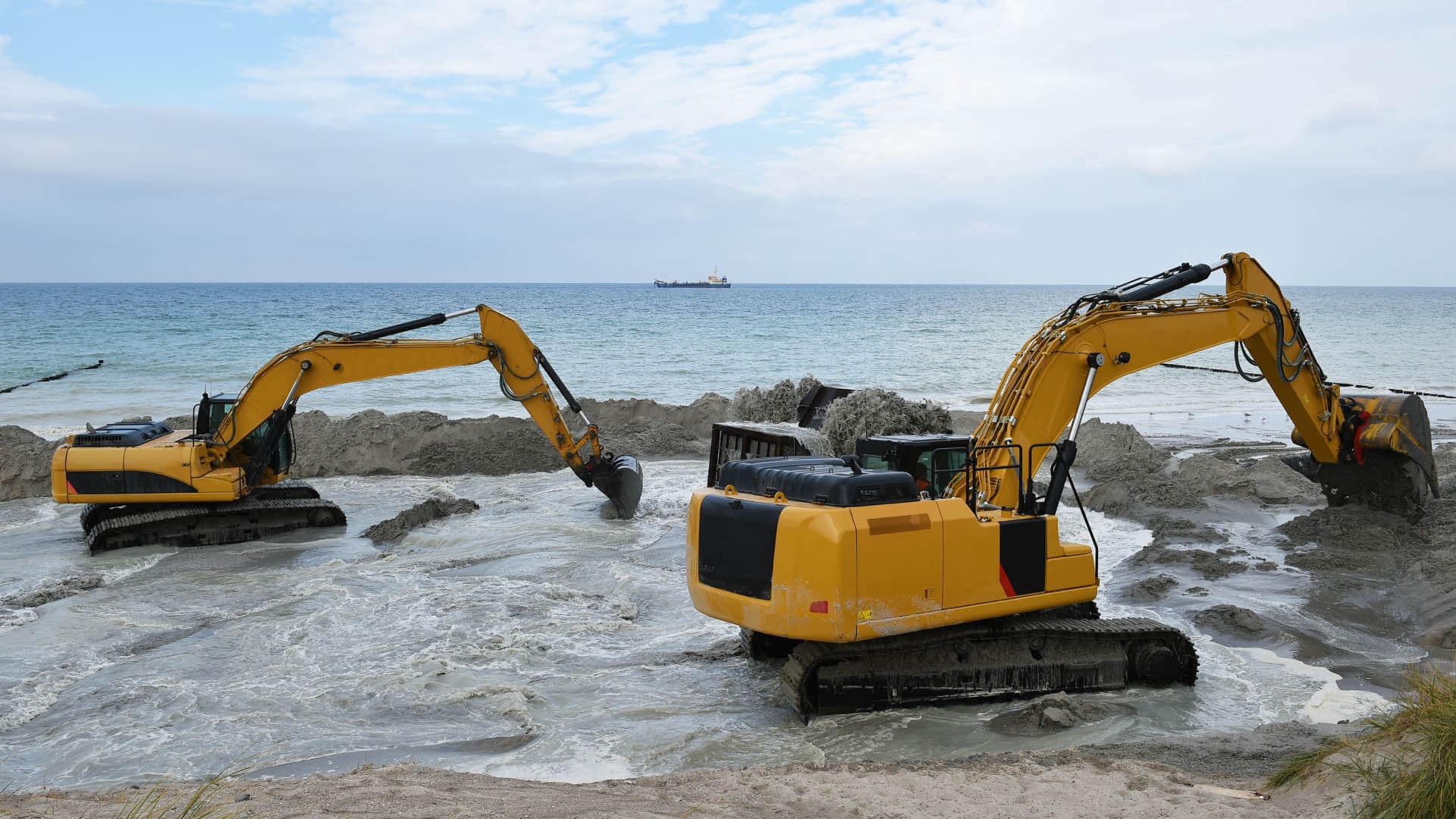Sand dredging equipment plays a critical role in industries such as mining, construction, and waterway maintenance by facilitating the removal and transportation of sediments. Whether used for deepening navigation channels, land reclamation, or extracting valuable minerals, these machines operate in challenging environments that expose them to wear and tear. Without proper maintenance, equipment failures can lead to costly downtime, reduced efficiency, and premature replacement of key components.
Implementing a proactive maintenance strategy is essential to ensuring the longevity and reliability of sand dredging equipment. Regular inspections, proper lubrication, and preventive repairs help minimize breakdowns and optimize performance. This is especially important for river sand dredging equipment, which operates in high-flow environments where sediment abrasion and mechanical strain are constant concerns. Similarly, maintaining lake dredging equipment requires careful attention to corrosion prevention and hydraulic system upkeep to ensure smooth operations in freshwater conditions.
This blog will explore essential maintenance strategies for sand dredging machines, focusing on best practices for extending the lifespan of river sand dredging equipment and other dredging machinery. By following these guidelines, operators can maximize efficiency, reduce operational costs, and keep their dredging projects running smoothly for years to come.
Understanding Sand Dredging Equipment and Its Components
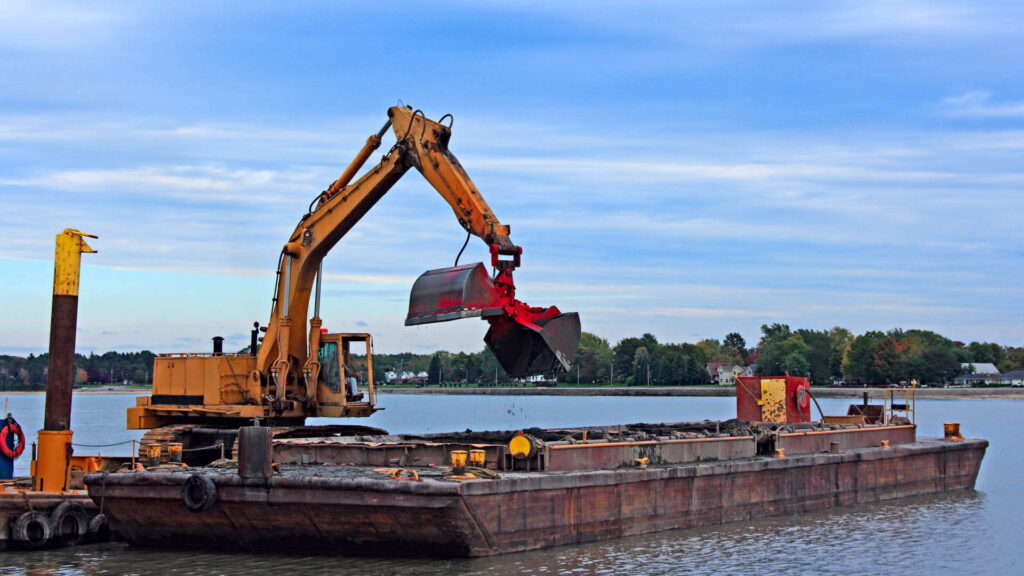
Sand dredging equipment is essential for efficiently removing and transporting sediment in mining, construction, and waterway maintenance projects. There are two primary types: hydraulic dredging equipment, which uses suction and pumps to transport material through pipelines, and mechanical dredging equipment, which relies on excavators, buckets, or clamshells to scoop and remove sediment physically. Both types play a crucial role in dredging operations, and their longevity depends on proper maintenance.
Several key components require regular inspection and servicing to keep sand dredging machine in optimal condition. Dredge pumps and impellers are the core of hydraulic dredgers, moving large volumes of sediment through pipelines. Worn-out pump components can reduce efficiency and cause costly downtime. Cutterheads and suction systems must also be maintained, as excessive wear on cutting edges can decrease dredging effectiveness.
Engines and power systems require routine servicing to ensure reliable operation, especially in high-intensity dredging projects. Hydraulic and mechanical parts, including hoses, cylinders, and gears, must be lubricated and checked for leaks to prevent failures. Additionally, pipelines and hoses used in river sand dredging equipment need regular inspection to detect cracks, leaks, or blockages that can disrupt material flow.
The challenging conditions in which river sand dredging equipment and lake dredging equipment operate contribute to accelerated wear and tear. Constant exposure to abrasive sediments, varying water pressures, and corrosive elements increases the risk of mechanical failures. In freshwater environments, lake dredging equipment faces specific challenges, such as biofouling and rust formation, making corrosion prevention crucial. By implementing proper maintenance practices, operators can extend the lifespan of sand dredging machines, ensuring consistent performance and reducing costly repairs.
Routine Inspection and Preventive Maintenance
Routine inspection and preventive maintenance are essential for maximizing the efficiency and lifespan of sand dredging equipment. By identifying early signs of wear and addressing minor issues before they escalate into major failures, operators can reduce downtime, lower repair costs, and improve overall dredging performance. Whether working in rivers, lakes, or coastal environments, a proactive maintenance plan is critical for ensuring uninterrupted operations.
A structured inspection checklist is necessary to maintain the sand dredging machine in peak condition. Regular checks should include:
- Corrosion and structural damage inspection – Since dredgers operate in harsh environments, metal surfaces are prone to rust and structural weakening. Applying anti-corrosion coatings and promptly addressing damaged areas helps prevent long-term deterioration.
- Dredge pump performance monitoring – The pump is the heart of river sand dredging equipment and needs to be checked for reduced suction power, unusual vibrations, or clogging. Worn-out impellers should be replaced to maintain efficiency.
- Lubrication of moving parts and hydraulic systems – Proper lubrication prevents friction damage and extends the life of gears, bearings, and hydraulic cylinders. This is especially important for mechanical components in lake dredging equipment that operate in wet conditions.
- Ensuring pipeline integrity and preventing leaks – Pipes and hoses should be inspected for cracks, leaks, or blockages. Regular flushing prevents sediment buildup that could reduce dredging efficiency.
The frequency of preventive maintenance depends on the dredging environment and workload. High-use river sand dredging equipment should be inspected weekly, while lake dredging equipment used for occasional projects may require monthly maintenance. Keeping a detailed maintenance log ensures that inspections and repairs are carried out consistently, helping operators extend the service life of the sand dredging machine.
Cleaning and Corrosion Prevention
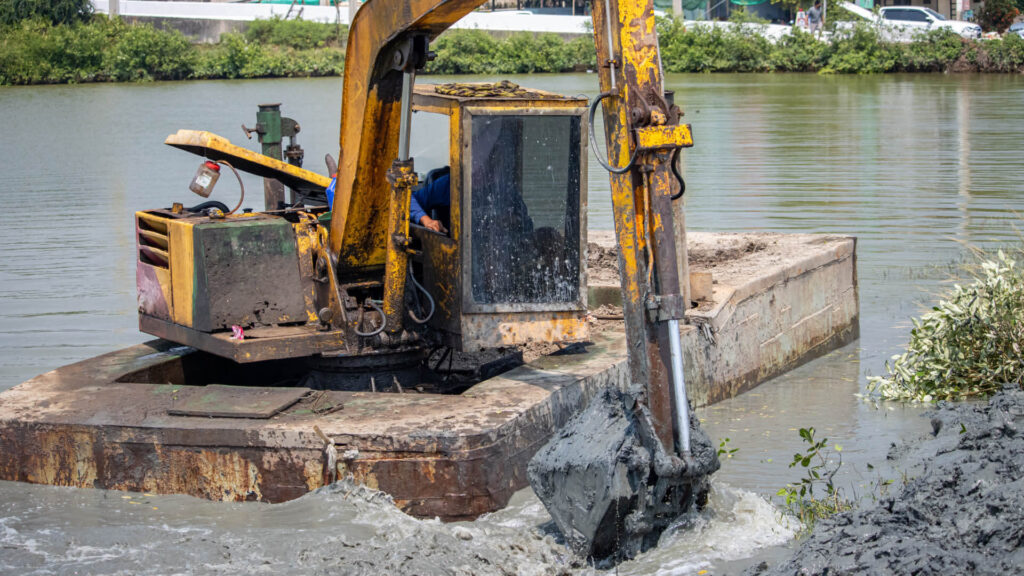
Cleaning and corrosion prevention are critical to maintaining the efficiency and longevity of sand dredging equipment. Sediment buildup can significantly impact performance, reducing the effectiveness of pumps, cutter heads, and pipelines. Over time, accumulated debris can clog essential components, leading to reduced suction power, increased fuel consumption, and premature wear on moving parts. For river sand dredging equipment and lake dredging equipment, exposure to waterborne minerals and organic matter accelerates corrosion, making regular cleaning and protective treatments essential.
After each operation, thorough cleaning of the sand dredging machine helps prevent material buildup and mechanical failures. Flushing pipelines with clean water removes residual sediment, while pressure washing cutter heads and dredge pumps eliminate debris that could cause blockages. Hydraulic systems and mechanical joints should be wiped down to remove dirt and lubricated to prevent rust formation.
Another essential step in maintaining river sand dredging equipment is applying anti-corrosion coatings. Marine-grade protective coatings shield metal surfaces from rust and chemical deterioration. Sacrificial anodes can also be installed to reduce electrochemical corrosion, particularly in environments with high salinity.
Proper storage techniques further extend the lifespan of lake dredging equipment, especially when used in fresh and brackish water conditions. Equipment should be stored in dry, covered areas to prevent moisture exposure. Draining water from pumps, pipelines, and hoses before storage reduces the risk of internal rust and freezing damage in colder climates. Regularly applying rust inhibitors to exposed metal parts ensures long-term durability.
By implementing these cleaning and corrosion prevention strategies, operators can minimize equipment wear, reduce downtime, and maximize the operational lifespan of sand dredging machines, ultimately improving efficiency and cost savings in dredging projects.
Lubrication and Hydraulic System Maintenance
Lubrication and hydraulic system maintenance are essential for ensuring the efficient operation and longevity of sand dredging equipment. Proper lubrication reduces friction between moving parts, minimizes wear and tear, and prevents overheating, which can lead to costly repairs and downtime. Without adequate lubrication, components such as dredge pumps, bearings, and cutter heads experience increased resistance, resulting in decreased efficiency and potential mechanical failures.
Selecting the right lubricants is crucial for maintaining sand dredging machines. To withstand harsh operating conditions, high-performance marine-grade lubricants are recommended for dredge pumps, bearings, and mechanical joints. Synthetic oils and greases with anti-corrosion properties provide enhanced protection, especially for equipment exposed to water and abrasive sediments. For hydraulic systems, using high-quality, water-resistant hydraulic fluids ensures smooth performance and prevents contamination-related failures.
Hydraulic system issues can significantly impact the performance of river sand dredging equipment. Common problems include leaks, pressure loss, and overheating, all of which can reduce dredging efficiency and increase operational costs. To prevent leaks, hydraulic hoses and fittings should be regularly inspected for cracks and wear. Ensuring proper fluid levels and filtering out contaminants helps maintain pressure and extends the life of the system.
Preventative maintenance is essential for optimal performance, especially for river sand dredging equipment operating in demanding environments. Regularly checking hydraulic fluid viscosity, monitoring system pressure, and replacing worn-out seals help maintain efficiency. Similarly, lake dredging equipment requires frequent lubrication of exposed components to prevent rust and mechanical degradation due to moisture exposure.
By implementing a comprehensive lubrication and hydraulic maintenance plan, operators can significantly extend the service life of sand dredging equipment, reducing downtime and ensuring continuous operation in both river and lake dredging projects.
Pump and Cutterhead Maintenance
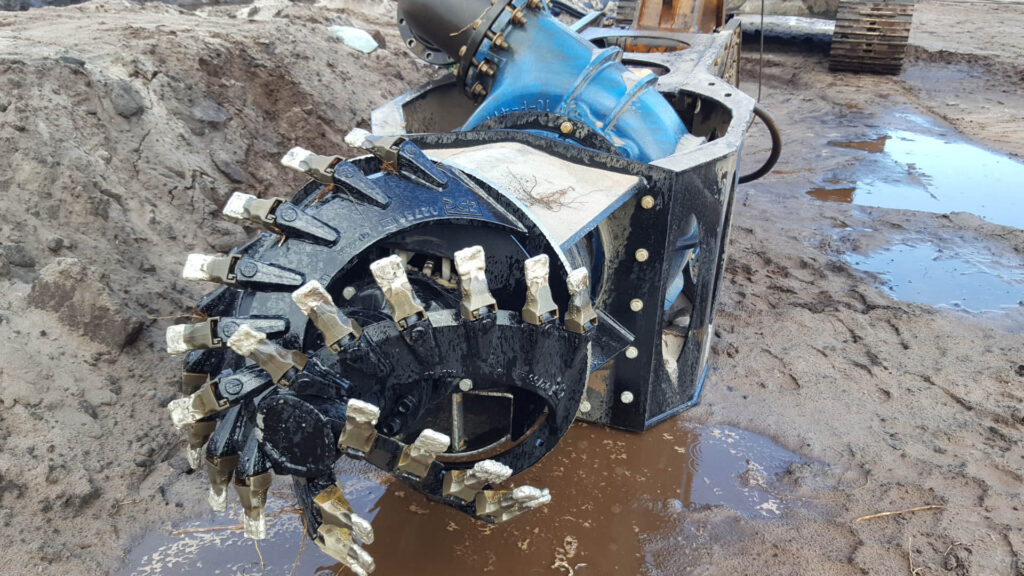
Maintaining pump and cutter head efficiency is crucial for maximizing the performance and lifespan of sand dredging equipment. Pumps move sediment through pipelines, and any inefficiencies can reduce dredging capacity, increase fuel consumption, and cause mechanical failures. Cutterheads, on the other hand, break up compacted material, making dredging more efficient, especially in demanding environments such as river sand dredging equipment operations.
Regular pump maintenance helps prevent clogging and excessive wear. Over time, sediment and debris can accumulate inside the pump, leading to blockages that reduce efficiency. Operators should routinely inspect pumps for signs of reduced suction, unusual vibrations, or overheating, which may indicate internal wear or impeller damage. If these issues arise, immediate repairs or part replacements are necessary to restore optimal performance and avoid costly downtime.
Cutterhead maintenance is equally important for sand dredging machines, as dull or damaged blades reduce cutting efficiency and increase operational strain. Regular sharpening or replacement ensures the cutter head can effectively break up different types of sediment. Monitoring wear patterns is essential, as excessive wear on one side of the cutter head may indicate misalignment or imbalanced dredging conditions.
The type of sediment being dredged significantly impacts pump and cutter head performance. For instance, fine sand and silt are easier to pump but may cause excessive wear on impellers over time. Coarser materials, such as gravel or compacted clay, require a robust cutter head and more powerful pumps, particularly in river sand dredging equipment where strong currents can shift sediment unpredictably. Similarly, lake dredging equipment must be maintained to handle varying sediment densities and organic debris commonly found in freshwater environments.
By implementing regular pump and cutter head maintenance, operators can extend the service life of sand dredging machines, reduce downtime, and maintain efficient dredging operations across different water conditions.
Addressing Common Mechanical Failures
Mechanical failures in sand dredging machines can lead to costly downtime and reduced operational efficiency. Identifying and troubleshooting common breakdowns early can prevent minor issues from escalating into major equipment failures. The most frequent mechanical problems include engine overheating, excessive vibrations, and power failures, all of which can severely impact dredging performance.
Engine overheating is a common issue in river sand dredging equipment, often caused by clogged cooling systems, insufficient lubrication, or prolonged heavy-duty operation. To prevent overheating, coolant levels should be regularly inspected, heat exchangers cleaned, and proper ventilation ensured. Vibrations in dredging machinery may indicate misalignment, worn-out bearings, or loose components. Addressing these issues promptly through routine maintenance helps maintain operational stability.
Electrical faults, fuel system blockages, or battery malfunctions can cause power failures. To keep lake dredging equipment functioning reliably, operators should routinely check wiring connections, inspect fuel filters, and replace batteries when necessary.
When mechanical components fail, deciding between repair and replacement is crucial. Minor wear on parts like impellers or cutter heads may warrant refurbishment, while severe damage to critical components such as engines or hydraulic systems often justifies full replacement. In emergency situations, having spare parts on hand and a well-trained maintenance team can minimize downtime, ensuring that both the sand dredging machine and river sand dredging equipment remain operational with minimal disruptions.
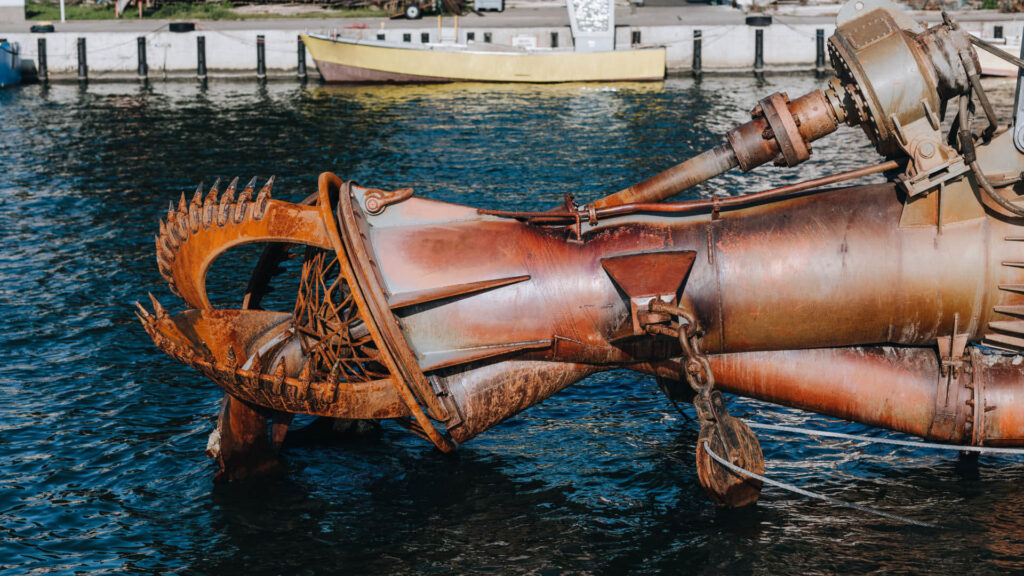
Conclusion
Proper maintenance is essential for extending the lifespan and efficiency of sand dredging equipment. Regular inspections, timely lubrication, and preventive repairs help minimize wear and tear, reducing downtime and operational costs. By implementing a structured maintenance plan, operators can ensure consistent performance and avoid costly breakdowns.
Routine inspections are crucial for detecting early signs of mechanical failure. Checking pumps, cutter heads, hydraulic systems, and pipelines prevents small issues from escalating into major repairs. Lubricating moving parts reduces friction, prevents overheating, and extends the life of critical components. Additionally, corrosion prevention and proper storage techniques are vital for maintaining lake dredging equipment, especially in freshwater environments.
To maximize efficiency, operators should adopt a proactive approach to maintaining river sand dredging equipment. Regular servicing, cleaning, and emergency preparedness strategies will help keep sand dredging equipment in peak condition, ensuring uninterrupted dredging operations and long-term reliability in various working conditions.


